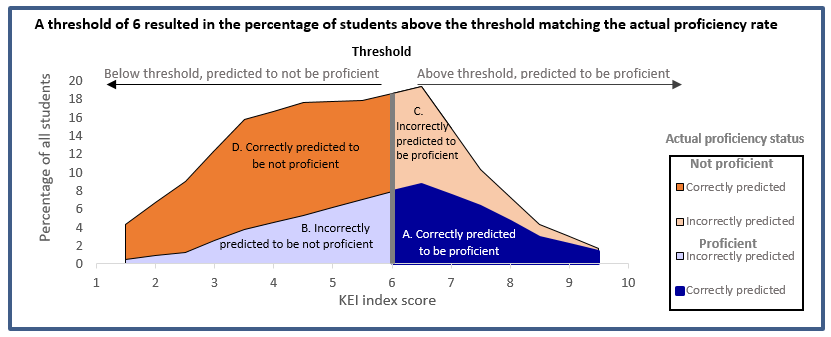
From the time they’re born, children learn skills that prepare them for reading. These skills include speaking and understanding language, recognizing letters, and sharing stories and books with adults. But children entering kindergarten start with varied levels of language and early literacy skills, and many states and districts lack high quality measures of whether these cohorts of children are on track to read proficiently. Teachers might measure kindergarten entry skills and periodically assess reading progress to guide instruction, but school and district leaders lack information about how to connect these measures to later reading proficiency. REL Mid-Atlantic explored whether these kindergarten entry assessments can provide states and districts with a useful measure of progress toward proficient reading for cohorts of children.

We’re partnering with the School District of Philadelphia, a member of our research alliance on strengthening the early education continuum, to look into whether its kindergarten entry assessment can be used to develop an aggregate indicator (that is, a measure for a district-wide cohort of children) of progress toward reading proficiency. Right now, teachers in the district observe entering kindergarteners in the classroom and rate their academic, socioemotional, and physical competencies on Pennsylvania’s Kindergarten Entry Inventory. The inventory includes two validated dimensions that measure children’s early reading and math skills (Early Academic Competencies) and behavioral skills (Learning Engagement Competencies). Our new report examines whether the Kindergarten Entry Inventory could help indicate the percentage of kindergarteners entering the district who are on track to read proficiently by the end of grade 3. We found the following key points:
- Entering kindergarteners with higher scores on the two dimensions of the Kindergarten Entry Inventory had higher scores in English language arts on the Pennsylvania System of School Assessment at the end of grade 3. The Early Academic Competencies dimension had a stronger relationship with reading proficiency in grade 3 (relative to the Learning Engagement Competencies dimension). As a result, that dimension received more weight in a 1-to-10 index we developed, which combines scores on both dimensions.
- District-wide, the study-identified threshold of 6 on our 1-to-10 index accurately indicated the proportion of students in this cohort who read proficiently at the end of grade 3. In all, 37 percent of kindergartners scored at least a 6 on the index, the same percentage of students who were proficient in English language arts on the Pennsylvania System of School Assessment three-and-a-half years later.
The upshot is that the School District of Philadelphia can use this threshold to estimate likely rates of grade 3 reading proficiency for future cohorts of entering kindergarteners. Used annually, this indicator could be one way to gauge the progress of Philadelphia’s Read by Fourth initiative. It can also serve to assess which areas in district schools require greater resources to support the School District of Philadelphia’s strategic early literacy goal. For example, looking at the indicator at the school level could help the district decide where to target investments in school-based reading coaches and classroom literacy resources.
Even though this indicator can inform decisions about cohorts of children, estimating future proficiency for individual students is more complex. Many students are misclassified by the threshold (areas C and B in the graphic that follows), so the aggregate threshold might not be appropriate to identify whether a specific student requires reading support. Instead, an index score might work best as one piece of evidence to be included alongside other diagnostic information in assessing a student’s need for additional reading support.
Finding ways to support progress toward reading proficiency remains a critical concern for states and districts, and this study demonstrates how kindergarten entry assessments can help track annual progress toward reading proficiency across cohorts of kindergartners. States can use these types of thresholds to target resources to early education programs and schools.

Cross-posted from the REL Mid-Atlantic website.




